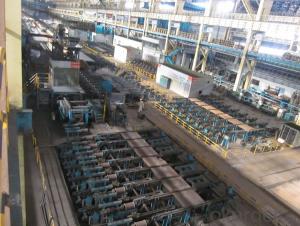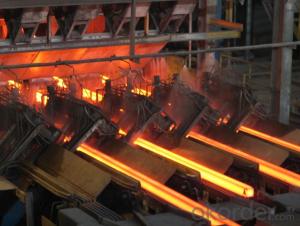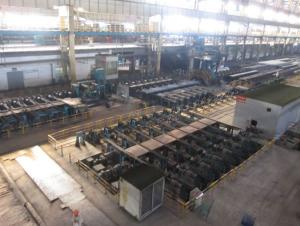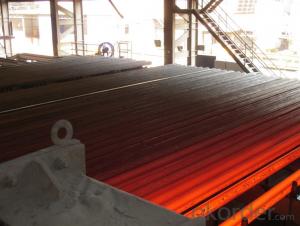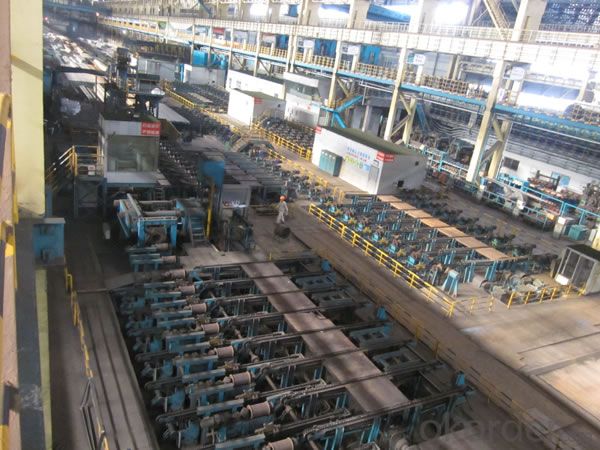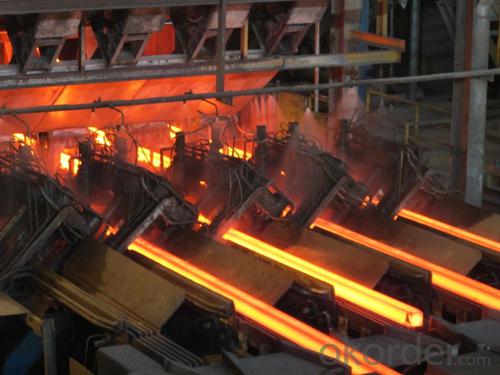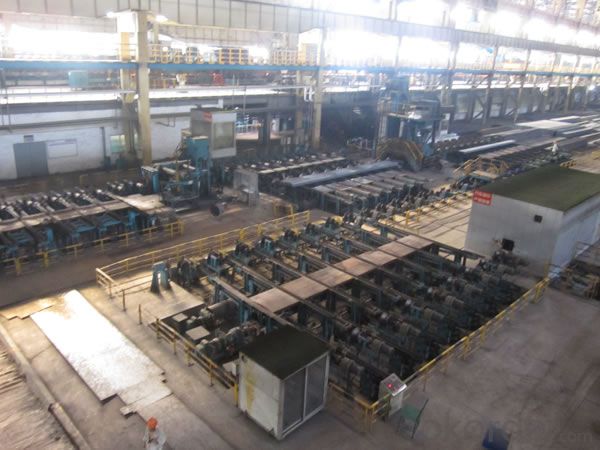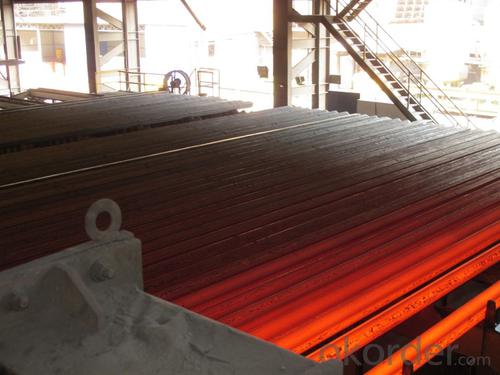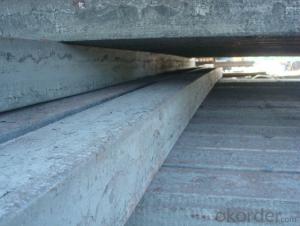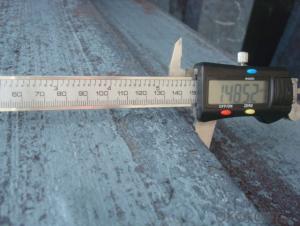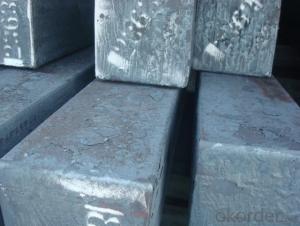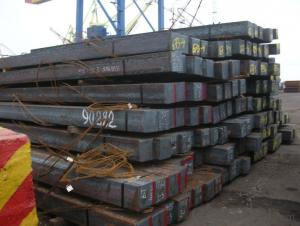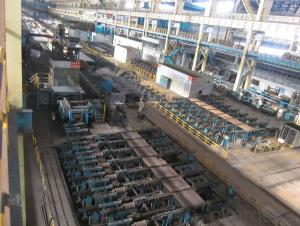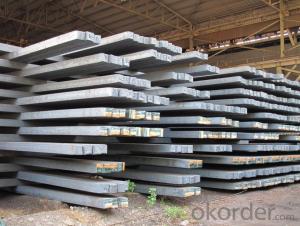Prime quality square alloy steel billet 95mm Q235
- Loading Port:
- Tianjin
- Payment Terms:
- TT OR LC
- Min Order Qty:
- 100 m.t.
- Supply Capability:
- 10000 m.t./month
OKorder Service Pledge
OKorder Financial Service
You Might Also Like
Structure of Prime quality square alloy steel billet 95mm Q235
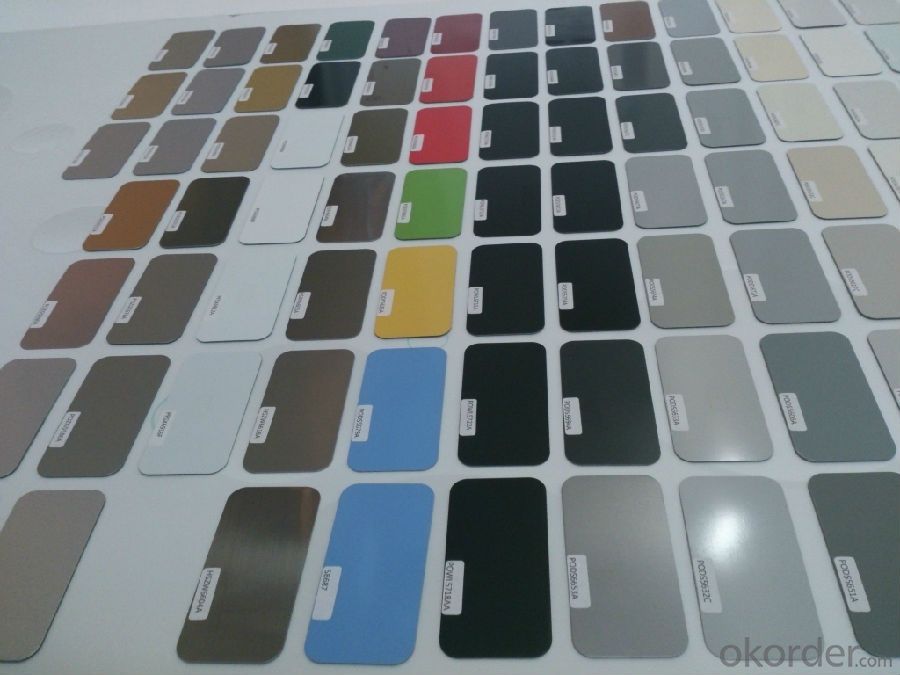
Description of Prime quality square alloy steel billet 95mm Q235
1. Prepainted steel coil is coated with organic layer, which provides higher anti-corrosion property and a longer lifespan than that of galvanized or galvalume steel sheets.
2. The base metals for prepainted steel coil consist of cold rolled, HDGI Steel, electro-galvanized and hot-dip alu-zinc coated steel. The finish coats of prepainted steel coil can be classified into groups as follows: polyester, silicon modified polyesters, polyvinylidene fluoride, high-durability polyester, etc.
3. The production process has evolved from one-coating-and-one-baking to double-coating-and-double-baking, and even three-coating-and-three-baking.
4. The color of the prepainted steel coil has a very wide selection, like orange, cream-colored, dark sky blue, sea blue, bright red, brick red, ivory white, porcelain blue, etc.
5. The prepainted steel coils can also be classified into groups by their surface textures, namely regular prepainted sheets, embossed sheets and printed sheets.
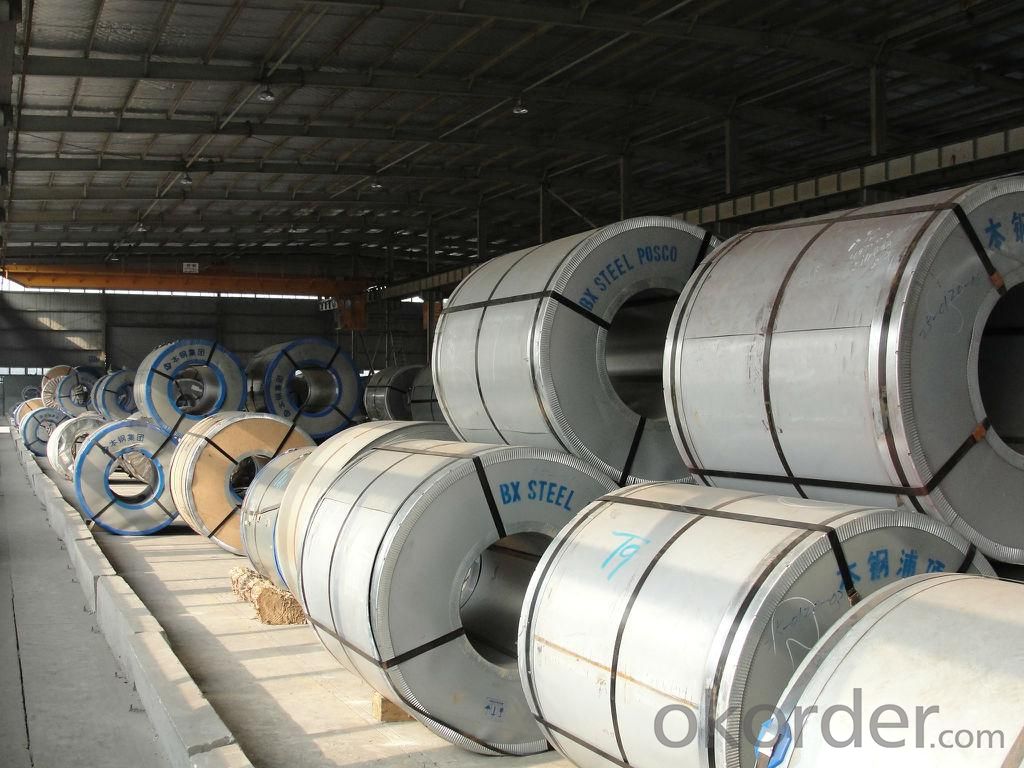
Main Feature of Prime quality square alloy steel billet 95mm Q235
Uncoated CR steel sheet
With the features of in line with the international highest standards in demension and shape, excellent surface finish and properties, the products are mainly used in home appliance and automobile industries.
Galvanized steel sheet(include HDG and EG)
With the features of good corrosion resistance, the products are mainly used in automobile, home appliance, electronics, building and machinery manufacture industries, etc.
Precoated steel sheet
With the features of enviromental protection and good processablility, long lasting surface durability, rich in colors, the products are maily used in building, home appliance and furniture industries, etc.
Applications of Prime quality square alloy steel billet 95mm Q235
Construction
Manufacture anticorrosion, industrial and civil architecture roof boarding, roof grille
Light industries
Home appliance's case, civil chimney, kitchen utensils
Auto industry
Corrosion resistant parts of cars
Agriculture
Food storage, meat and aquatic products' freezing and processing equipment
Commerce
Equipments to store and transport materials, and packing implements
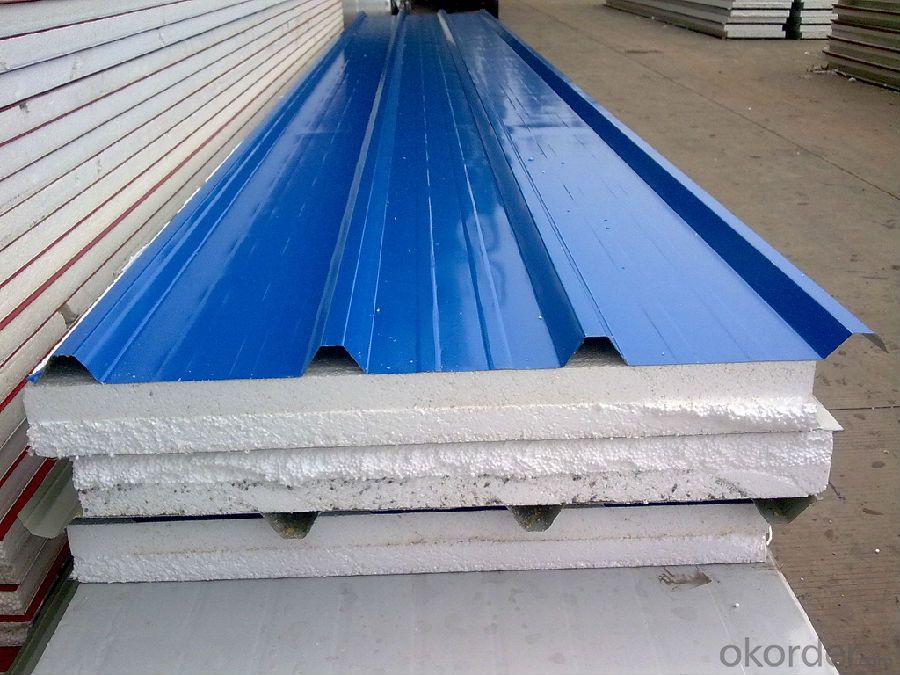
Specifications of Prime quality square alloy steel billet 95mm Q235
Product | Prime quality square alloy steel billet 95mm Q235 |
Material Grade | SGCC / SGCH / DX51D+AZ, etc |
Thickness | 0.6-3.0mm |
Width | 500-1500mm |
Tolerance | Thickness: +/-0.02mm , Width:+/-2mm |
Zinc-coating | Z30-150g/m2 |
Technique | Raw material: Hot rolled steel coil --> Cold rolled_>hot dipped galvalume |
Surface | Dried, Chromated, Unoiled |
Spangle | Regular spangle , small spangle, zero spangle |
ID | 508MM 610MM |
Coil weight | 1-25MT |
Export package | Cardboard inner sleeves, Waterproof paper, galvanized steel covered and steel strip packed |
FAQ of Prime quality square alloy steel billet 95mm Q235
We have organized several common questions for our clients,may help you sincerely:
1. How Can I Visit There?
Our company is located in Tianjin City, China, near Beijing. You can fly to Tianjin Airport Directly. All our clients, from home or aboard, are warmly welcome to visit us!
2. How Can I Get Some Sample?
We are honored to offer you sample.
3. Why choose CNBM?
Our delivery time about 15-20days for standard sizes, if you have other requirements like hardness, quanity and width ,it is about 20-40days. But don't worry we also try our best for the delivery time ,because time longer and our cost is higher.
- Q: How are steel billets different from steel ingots?
- Steel billets and steel ingots are both intermediate products in the steel manufacturing process, but they differ in terms of their shape and size. Steel billets are smaller and have a square or rectangular cross-section, typically measuring less than 36 square inches. In contrast, steel ingots are larger and have a more irregular shape, often weighing several tons. Additionally, steel billets are typically produced using continuous casting methods, while steel ingots are typically made through traditional ingot casting processes.
- Q: What are the main factors that affect the competitiveness of steel billets manufacturers?
- There are several factors that significantly affect the competitiveness of steel billets manufacturers. These factors can determine the success or failure of a manufacturer in the highly competitive steel industry. 1. Cost of raw materials: The cost and availability of raw materials, such as iron ore and coal, play a crucial role in determining the competitiveness of steel billets manufacturers. Fluctuations in the prices of these raw materials can impact the overall production costs, and manufacturers need to ensure they have a reliable and cost-effective source of raw materials. 2. Production efficiency: The efficiency of the manufacturing process is another key factor. Manufacturers need to have streamlined production processes and advanced technology to maximize output while minimizing costs. Improving production efficiency can help manufacturers achieve economies of scale, which in turn can enhance competitiveness. 3. Quality control: The quality of steel billets is of utmost importance, as it determines the performance and durability of the final products made from these billets. Manufacturers need to implement stringent quality control measures to ensure that their products meet the required industry standards. Consistently producing high-quality steel billets can give manufacturers a competitive edge. 4. Technological advancements: Keeping up with technological advancements is crucial for manufacturers to stay competitive. Investing in advanced machinery, automation, and digitalization can improve production efficiency, reduce costs, and enhance product quality. Manufacturers need to adopt new technologies and continuously innovate to stay ahead of their competitors. 5. Energy costs: Energy-intensive processes are involved in steel billets manufacturing, and the cost of energy can significantly impact the competitiveness of manufacturers. Access to affordable and reliable energy sources is essential for manufacturers to maintain competitive prices. 6. Market demand and competition: The overall demand for steel billets and the level of competition in the market are significant factors affecting competitiveness. Manufacturers need to have a deep understanding of market trends, customer preferences, and emerging applications to align their production accordingly. Additionally, they must develop a strong marketing strategy to effectively compete with other manufacturers in the industry. 7. Access to skilled labor: The availability of skilled labor is crucial for manufacturers to maintain competitiveness. Skilled workers with expertise in steel production processes can contribute to improved efficiency and quality. Manufacturers need to invest in training programs and attract and retain skilled workers to stay competitive. 8. Government regulations and policies: Government regulations related to environmental compliance, labor laws, and trade policies can impact the competitiveness of steel billets manufacturers. Compliance with these regulations can add to the costs and administrative burden for manufacturers. Adapting to changing regulations and staying in line with industry standards is essential to maintain competitiveness. In conclusion, the competitiveness of steel billets manufacturers is influenced by various factors, including raw material costs, production efficiency, quality control, technological advancements, energy costs, market demand and competition, access to skilled labor, and government regulations. Manufacturers need to address these factors strategically to stay competitive in the ever-evolving steel industry.
- Q: Are steel billets used in the manufacturing of tools?
- Yes, steel billets are commonly used in the manufacturing of tools. Steel billets are semi-finished steel products that are typically hot-rolled or forged into various shapes, including bars, rods, and sheets. These billets serve as the primary raw material in tool manufacturing, as they provide the necessary strength, durability, and machinability required for producing high-quality tools. By shaping and machining the steel billets, manufacturers can create a wide range of tools such as wrenches, hammers, screwdrivers, drill bits, and cutting tools. The use of steel billets ensures that these tools possess the necessary hardness, toughness, and resistance to wear and tear, making them reliable and long-lasting. Therefore, steel billets play a crucial role in the production of tools, contributing to the overall efficiency and functionality of various industries.
- Q: What is the typical production process for steel billets?
- The process of producing steel billets typically involves a series of steps. Initially, raw materials like iron ore, coal, and limestone are acquired. These materials are then processed and converted into iron through a blast furnace or direct reduction method. To eliminate impurities and adjust the composition, the iron is further refined in either a basic oxygen furnace or an electric arc furnace. Once the iron has been refined, it is poured into large rectangular molds known as ingots. These ingots are subsequently heated and rolled into semi-finished products called blooms or slabs. Blooms usually have a square or rectangular shape, whereas slabs are flat and rectangular in form. The next stage is to further process the blooms or slabs into billets. This is achieved by reheating the semi-finished products and passing them through a sequence of rolling mills. The rolling mills exert pressure to shape the metal and decrease its thickness. This process, known as hot rolling, takes place. After hot rolling, the billets are cooled and carefully examined for any defects. They may also undergo additional processes, such as surface treatment or heat treatment, to enhance their properties. Finally, the billets are typically cut into desired lengths and stored before undergoing further processing or being shipped to customers. In conclusion, the production of steel billets involves obtaining raw materials, refining the iron, casting it into semi-finished products, hot rolling, and conducting final inspection and processing. This comprehensive process ensures that the steel billets meet the necessary specifications and quality standards before being utilized in various industries, including construction, automotive, and manufacturing.
- Q: How are steel billets used in the manufacturing of railway tracks?
- Steel billets are an essential component in the manufacturing of railway tracks. These billets serve as the raw material from which the tracks are formed. The process begins with the steel billets being heated to a high temperature, typically around 1200 degrees Celsius, in a furnace. This heating process helps to soften the steel and make it more malleable. Once the billets are heated, they are passed through a series of rollers in a process known as hot rolling. This process involves the billets being continually passed through the rollers to gradually reduce their thickness and shape them into long, slender strips. This hot rolling process also helps to refine the internal structure of the steel, improving its strength and durability. After the hot rolling process, the steel strips are then cut into smaller sections, known as rails. These rails are carefully inspected for any defects or imperfections before they are further processed. They undergo a process called finishing, where any surface irregularities or imperfections are removed through grinding or polishing. The finished rails are then treated with various techniques to enhance their strength and resistance to wear and tear. This may include heat treatment processes such as quenching and tempering, which further improve the rails' hardness and toughness. Additionally, the rails may be coated with protective layers to prevent corrosion and extend their lifespan. Finally, the rails are transported to the construction site where they are laid and fastened to the sleepers or ties to form the railway track. The steel rails provide a sturdy and reliable foundation for trains to travel on, with their strength and durability enabling them to withstand heavy loads and constant use. In conclusion, steel billets play a crucial role in the manufacturing of railway tracks. They are transformed through various processes into rails that provide a solid foundation for trains to run on. The use of steel billets ensures that the railway tracks are strong, durable, and capable of withstanding the demands of heavy train traffic.
- Q: What are the different types of steel billet inspection equipment?
- There are several types of steel billet inspection equipment, including ultrasonic testing machines, magnetic particle inspection systems, eddy current testing devices, and visual inspection tools. These equipment are used to ensure the quality and integrity of steel billets by detecting any defects or irregularities in their composition, surface, or internal structure.
- Q: What are the potential applications of steel billets in the transportation aftermarket?
- Steel billets have various potential applications in the transportation aftermarket. They can be used for manufacturing various components such as engine parts, suspension systems, chassis, and body structures. Steel billets offer excellent strength, durability, and reliability, making them suitable for heavy-duty applications in the transportation industry. Additionally, their versatility allows for customization and adaptability to meet specific requirements. Overall, steel billets play a crucial role in enhancing the performance, safety, and efficiency of vehicles in the transportation aftermarket.
- Q: What are the properties and characteristics of steel billets?
- Steel billets, typically utilized in the production of various steel products, exhibit numerous properties and characteristics that render them suitable for such applications. To begin with, their exceptional strength-to-weight ratio endows steel billets with immense strength, enabling them to withstand heavy loads. This strength is derived from the steel's carbon content, which enhances its structural integrity. Furthermore, their superb heat conductivity facilitates efficient heat transfer during diverse manufacturing processes. Consequently, steel billets prove ideal for applications involving high-temperature operations, such as forging and rolling. Moreover, their remarkable machinability enables easy shaping and forming into desired products. This property is of utmost importance in the manufacturing industry, as it allows for the production of intricate and personalized steel components. Steel billets also possess outstanding ductility, enabling them to stretch and mold without fracturing. This characteristic proves vital in applications requiring bending or forming the steel into various shapes. In addition, steel billets exhibit a high resistance to corrosion, rendering them suitable for outdoor or corrosive environments. This property guarantees the durability and longevity of steel products manufactured from billets. Furthermore, steel billets can be effortlessly welded, facilitating the fabrication of large and intricate structures. Their weldability renders them versatile and adaptable to diverse construction and manufacturing needs. Lastly, steel billets boast a consistent and uniform composition, ensuring the production of high-quality and dependable steel products. This consistency is achieved through meticulous manufacturing processes and rigorous quality control measures. To conclude, steel billets possess numerous properties and characteristics that make them highly sought-after in the production of steel products. Their high strength, heat conductivity, machinability, ductility, corrosion resistance, weldability, and consistent composition deem them indispensable in various industries, including construction, automotive, and manufacturing.
- Q: How are steel billets used in the manufacturing of electrical equipment?
- Various methods involve steel billets in the manufacturing of electrical equipment, particularly in the production of electrical transformers, which are vital for transferring electrical energy across different voltage levels. The core of transformers, responsible for efficient energy transfer, is manufactured using heated steel billets that are rolled into thin strips or sheets. These strips are then cut into specific shapes and sizes to create core laminations. These laminations are stacked and insulated to minimize energy losses and ensure effective power transfer. The utilization of steel billets guarantees the core's strength, durability, and magnetic properties, all of which are essential for the transformer's optimal functionality. Additionally, steel billets are used in the manufacturing of other electrical equipment, including motors and generators. In these applications, the billets are molded and machined into specific components such as rotor and stator cores, which are crucial for the generation and conversion of electrical energy. Furthermore, steel billets find application in the production of electrical enclosures and cabinets, which serve to protect sensitive equipment and wiring from external factors such as moisture, dust, and physical damage. These billets are shaped, welded, and assembled to create robust and dependable enclosures that house electrical components securely. In conclusion, steel billets play an integral role in the manufacturing process of electrical equipment. Their versatility, strength, and magnetic properties make them suitable for a wide range of applications, ensuring the efficiency, reliability, and longevity of electrical systems.
- Q: How do steel billets contribute to the overall aesthetics of a product?
- The overall aesthetics of a product can be greatly enhanced by steel billets in various ways. Firstly, the appearance of the final product is greatly influenced by the quality and finish of steel billets. Steel billets are commonly used as raw materials in manufacturing processes like forging, rolling, or machining. The sleek and refined look of the end product is achieved by using high-quality steel billets with smooth surfaces and uniform shapes. Furthermore, steel billets offer designers and manufacturers a wide range of possibilities in terms of shape and size. They can be easily customized and transformed into different forms, allowing for intricate and unique designs that enhance the visual appeal of the product. Steel billets can be molded, cut, or manipulated to create complex patterns, textures, or contours, providing endless opportunities for artistic expression. Additionally, the strength and durability of steel billets contribute to the longevity and resilience of the final product. Aesthetics are not solely based on visual appeal but also on the perception of quality. Steel billets, known for their robustness and resistance to corrosion, instill a sense of reliability and sturdiness. This perceived quality enhances the overall attractiveness of the product, making it more appealing to consumers. In conclusion, steel billets play a significant role in enhancing the overall aesthetics of a product by providing a high-quality, customizable, and durable raw material. Their smooth surface, versatility in shaping, and inherent strength enhance the visual appeal, enabling designers to create visually captivating and long-lasting products.
Send your message to us
Prime quality square alloy steel billet 95mm Q235
- Loading Port:
- Tianjin
- Payment Terms:
- TT OR LC
- Min Order Qty:
- 100 m.t.
- Supply Capability:
- 10000 m.t./month
OKorder Service Pledge
OKorder Financial Service
Similar products
Hot products
Hot Searches
Related keywords
